CBC News published a fantastic report explaining how Canada’s explosive immigration-driven population growth crush-loaded housing, services, and infrastructure, wrecking productivity and living standards.
The following chart from CBC News shows that Canada’s population growth since the pandemic ended was “off-the-charts”, growing by a record 1.2 million people last year:

Virtually all of the growth in Canada’s population has come via net overseas migration rather than natural increase (i.e., births minus deaths).
As illustrated in the graphic below, Canada’s population ballooned by more than three million people over the three years to 2024, with 98% of this growth coming via net overseas migration.
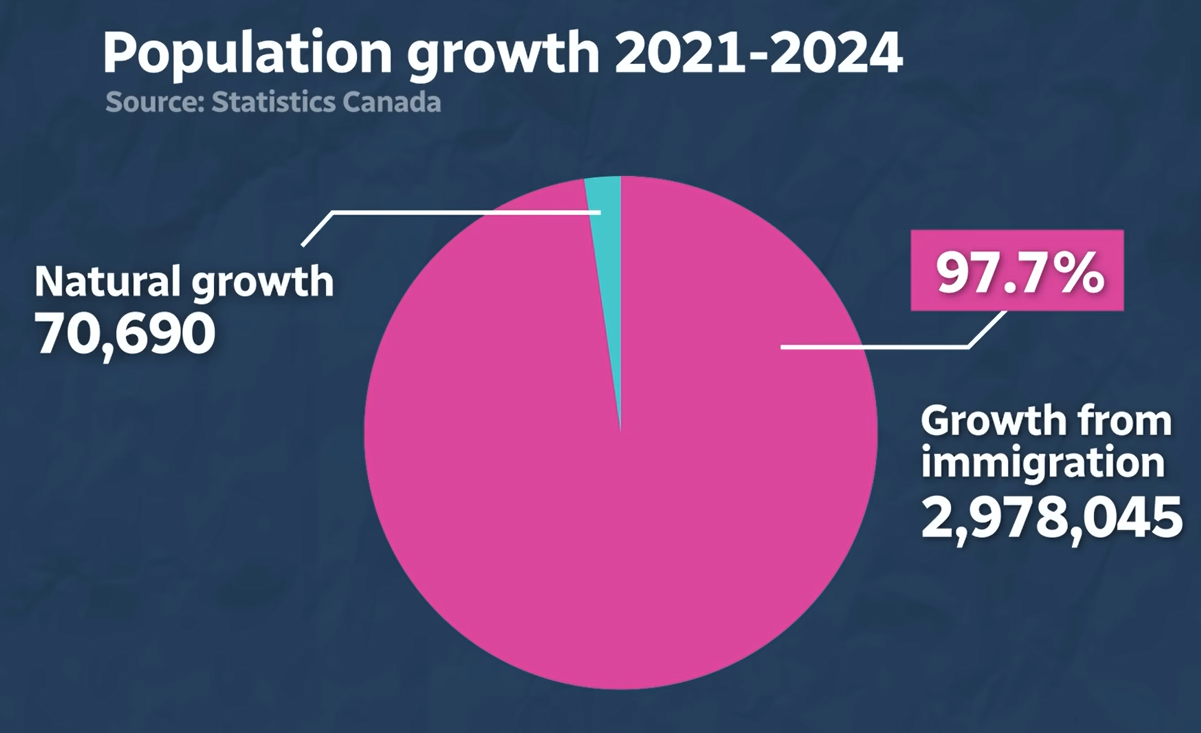
“That type of population growth in a rich country is unheard of. That’s just off the charts”, the report notes.
“Canada usually grows by around 300,000 people a year. So to be growing by over a million is substantial. We haven’t had that sort of population growth in really more than a century”.
“And if you look back at the federal government’s immigration forecast a few years ago, they said the plan was to welcome around 1.2 million new immigrants over a three-year period. That was already a record-breaking number that made headlines all over the world”.
“But that forecast didn’t include any mention of temporary residents that would end up coming to Canada over those three years. And by temporary, we mean international students and temporary foreign workers”.
Mike Moffatt from the Smart Prosperity Institute told CBC News that the level of population growth was simply “too much”.
“The number of people coming here is too fast. This growth was so sudden and it caught policy makers off guard that there was basically no time to react”, he said.
Mikal Skuterud, an economist at the University of Waterloo, argued that the Canadian government “lost control of the system” and that “it was a runaway train that they couldn’t slow down”.
The immigration surge caused a massive mismatch between housing supply and demand, driving up home prices and rents.
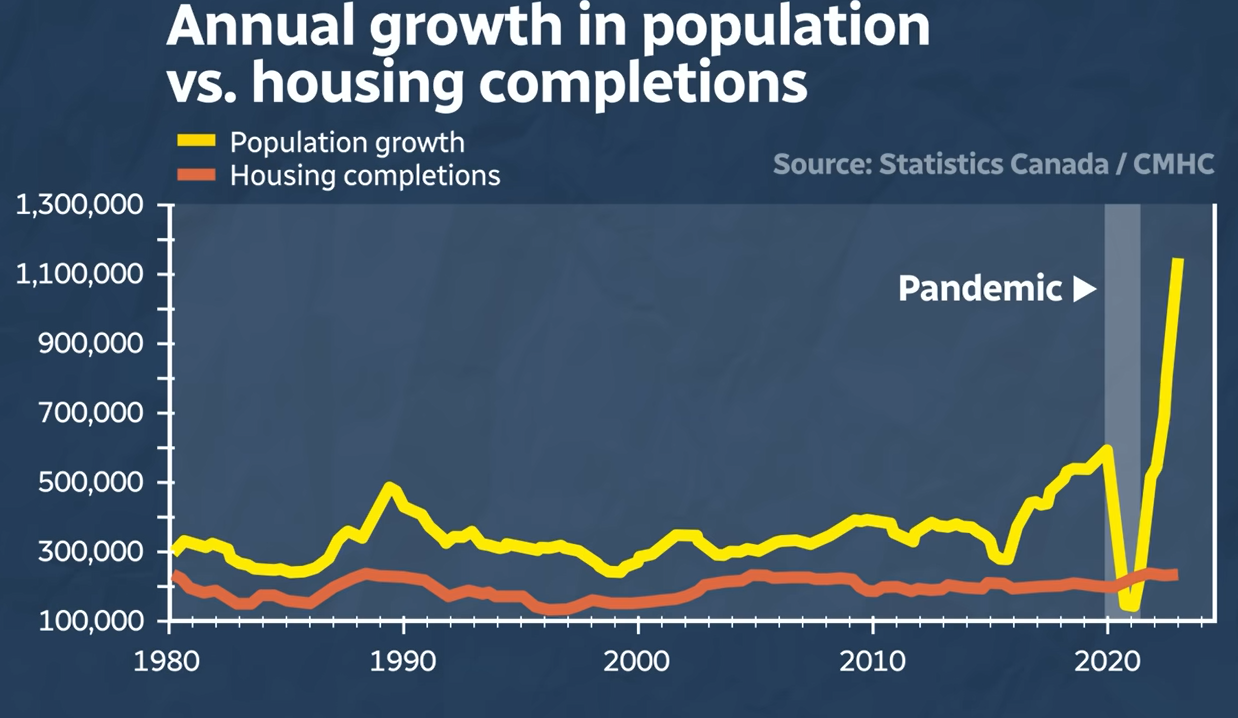
As a result, Canada has experienced the lowest rental vacancy rate on record and soaring rents.

“Even the Bank of Canada has been clear that strong population growth has added pressure to house prices and rents and there was concern among economists that the pressure was only going to keep building”, the CBC report notes.
“A recent CIBC report estimated even if the population continued to grow slightly less than it has over the past couple of years, we’d still have a shortage of about 5 million houses by 2030”.
“You would be hard-pressed to find anyone who thinks that building 5 million units in the next 6 years is realistic”.
“The reality is that when you add 1.3 million people to the population within the space of the year we can’t possibly match that on the supply”, the report noted.
The CBC report also notes how Canada’s essential services have been crush-loaded by rampant population growth.
It cites the hospital system as an example of the strain being placed on Canada where there are “record numbers of burnt out health care workers”.
In 2019, “there were just over 91,000 doctors in Canada. Over the next 4 years, there were about 6,000 more, but for a population that’s grown by millions in that time”.
“So, what does that mean for all those people who need a doctor? Essentially, it means fewer and fewer have access to one”.
“Last year, there were a million more emergency room visits in Canada than the year before, which has meant those admitted are now waiting about 40% longer than they were in 2020”.
“It’s really put a tremendous amount of pressure on the hospital system”, CBC notes.
Canadian Prime Minister Justin Trudeau has belatedly acknowledged that his government erred badly on immigration and has sought to backtrack.
Trudeau announced that he would reduce permanent migration levels by at least 20% and cut temporary migrant numbers by nearly 500,000 a year in order to allow housing, infrastructure, and services to catch up.
“[Our] main priority is to give all levels of government time to catch up. Time to make the necessary investments in health care, housing, and social services to accommodate more people in the future”, Trudeau said.
“We’ve seen massive population growth over the past years, particularly in the area of temporary workers and temporary residents. And we are now saying, okay, we need to let our communities and our infrastructure catch up to the population”.
The ABC could run an identical report on Australia, which has likewise experienced an unprecedented boom in net overseas migration, led by temporary migrants.
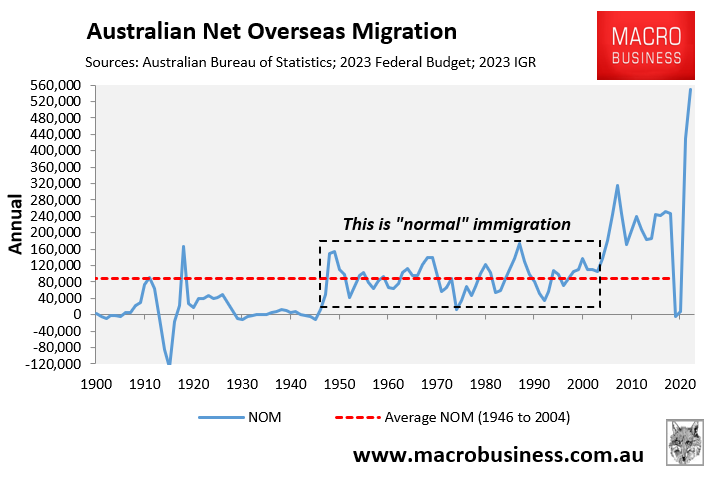
Population growth has run way ahead of housing construction.
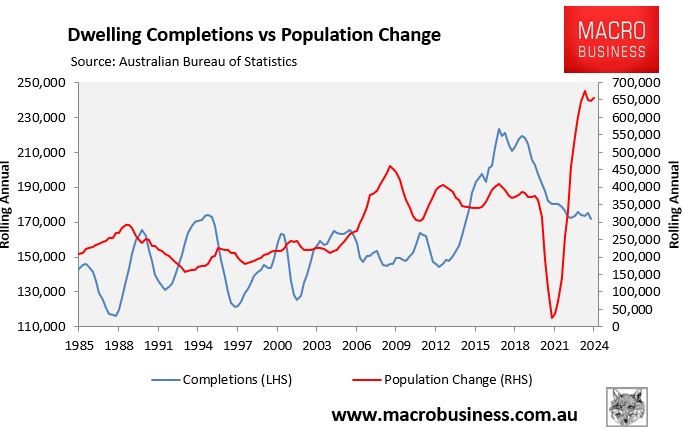
As a result, Australia has seen a similar impact on the rental market, with vacancy rates collapsing and rental inflation soaring.
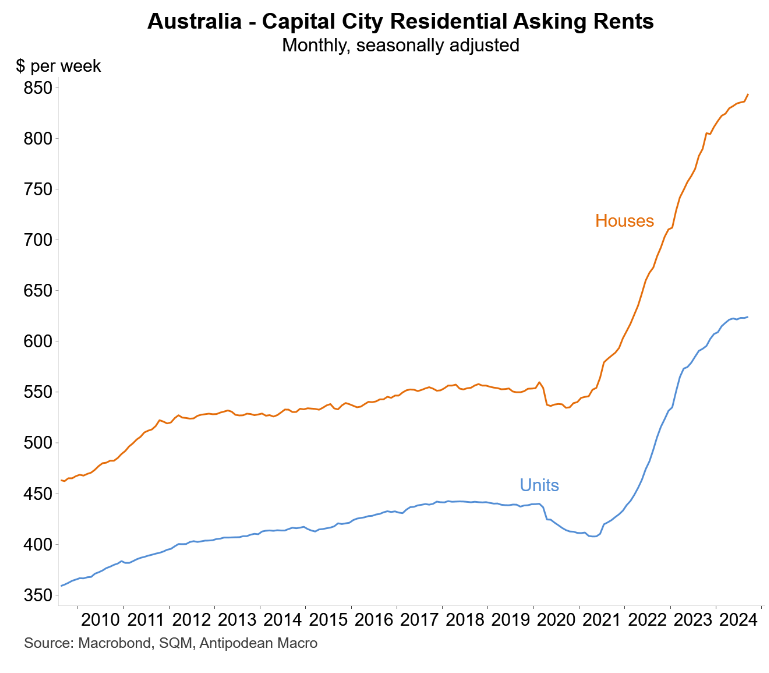
Both economies are now stuck in deep per capita recessions with deplorable productivity growth.
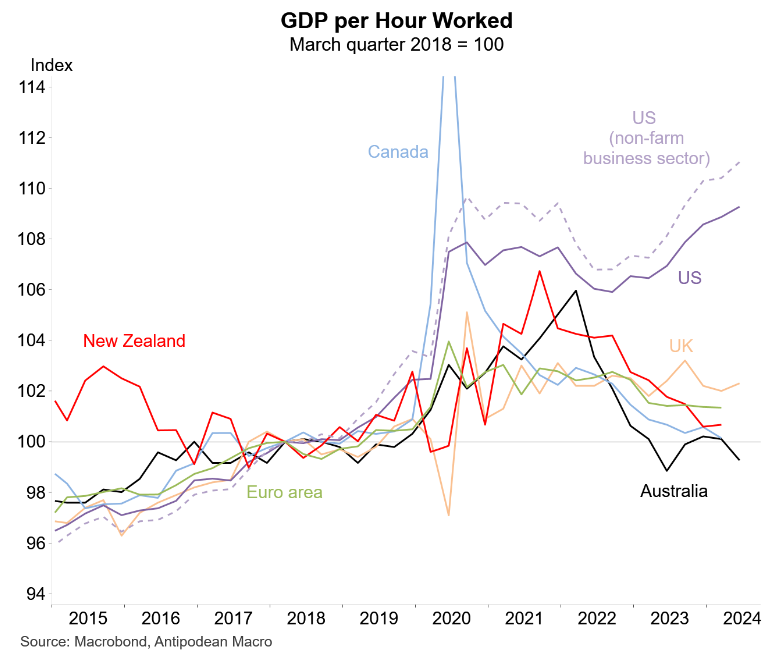
The Albanese Labor government should also seek massive cuts in immigration to allow housing, infrastructure, and services to catch up.

